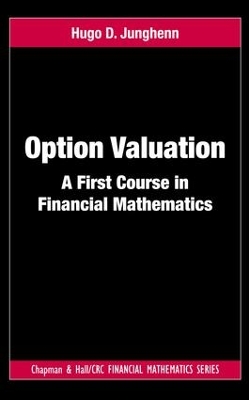Chapman and Hall/CRC Financial Mathematics
2 total works
Option Valuation: A First Course in Financial Mathematics provides a straightforward introduction to the mathematics and models used in the valuation of financial derivatives. It examines the principles of option pricing in detail via standard binomial and stochastic calculus models. Developing the requisite mathematical background as needed, the text presents an introduction to probability theory and stochastic calculus suitable for undergraduate students in mathematics, economics, and finance.
The first nine chapters of the book describe option valuation techniques in discrete time, focusing on the binomial model. The author shows how the binomial model offers a practical method for pricing options using relatively elementary mathematical tools. The binomial model also enables a clear, concrete exposition of fundamental principles of finance, such as arbitrage and hedging, without the distraction of complex mathematical constructs. The remaining chapters illustrate the theory in continuous time, with an emphasis on the more mathematically sophisticated Black-Scholes-Merton model.
Largely self-contained, this classroom-tested text offers a sound introduction to applied probability through a mathematical finance perspective. Numerous examples and exercises help students gain expertise with financial calculus methods and increase their general mathematical sophistication. The exercises range from routine applications to spreadsheet projects to the pricing of a variety of complex financial instruments. Hints and solutions to odd-numbered problems are given in an appendix and a full solutions manual is available for qualifying instructors.
Introduction to Financial Mathematics: Option Valuation, Second Edition is a well-rounded primer to the mathematics and models used in the valuation of financial derivatives.
The book consists of fifteen chapters, the first ten of which develop option valuation techniques in discrete time, the last five describing the theory in continuous time.
The first half of the textbook develops basic finance and probability. The author then treats the binomial model as the primary example of discrete-time option valuation. The final part of the textbook examines the Black-Scholes model.
The book is written to provide a straightforward account of the principles of option pricing and examines these principles in detail using standard discrete and stochastic calculus models. Additionally, the second edition has new exercises and examples, and includes many tables and graphs generated by over 30 MS Excel VBA modules available on the author’s webpage https://home.gwu.edu/~hdj/.

